I’m finally doing a big overview of some of The Ordinary’s products. They have a LOT of products, and I wanted to try as many as I could, and I only have one face so it’s taken a while!
I could only get through a few categories though, so I’ll probably go through the rest at some later date. I’m going to go through what I think are the best and worst of the direct acids, vitamins A, B and C, hydrators and oils (not all of them though), cleanser and sunscreen.
Remember: my skin is not the same as your skin. You might love some of the ones I don’t like and that’s fine – don’t stop using them just because I don’t like them! This goes for any brand or product, but I think it’s especially the case with The Ordinary because of the way they approach their product development (I’ll go into this).
Here’s the video on YouTube, scroll down for the written version.
Brand Overview
Since they launched, The Ordinary have really transformed the skincare market. I really think they’re one of the big reasons why everyone is so obsessed with the science behind skincare – it’s the magical combination of really budget friendly products, and the fact they put the ingredient names front and centre. Now that that we can all suddenly afford to try all these fancy, technical-sounding ingredients, we want to know what they do.
The way that The Ordinary have managed to stay so budget friendly is by really simplifying the formulations. This can work well for some ingredients, but really reduces the stability and effectiveness of other ingredients. That’s why I think The Ordinary tends to be really hit and miss with their products – this approach just doesn’t work with everything.
The overall formulation process that seems to have been cut down for The Ordinary can be really important for making it work for a range of skin types. This includes things like testing formulas on a range of skin, and tweaking the formula based on that feedback, and repeating that process to optimise the formula. When Dr Davin Lim and I talked to Deciem’s Chief Scientific Officer PK, it didn’t sound like they went through this process before launching, even though this is a standard optimisation process that every brand is meant to go through (at least for safety reasons).
Related post: Interview with Deciem (The Ordinary) Chief Scientific Officer and Dr Davin Lim
So this is how everything is so cheap, but it does also explain the massive range of experiences with particular products. You’ll see a bunch of one star reviews where a product gave people massive cystic pimples, chemical burns, really bad irritation… and then five star reviews of the same product where it’s completely life changing.
The packaging is also really low-cost. It’s almost entirely dropper bottles and flip-top tubes, which means they can cut costs by getting bulk buy discounts and reusing the same filling equipment for a whole bunch of different products. But some products will go off a lot faster than they might in different packaging, because some ingredients do really need the extra protection from fancier packaging like airless pumps and foil tubes.
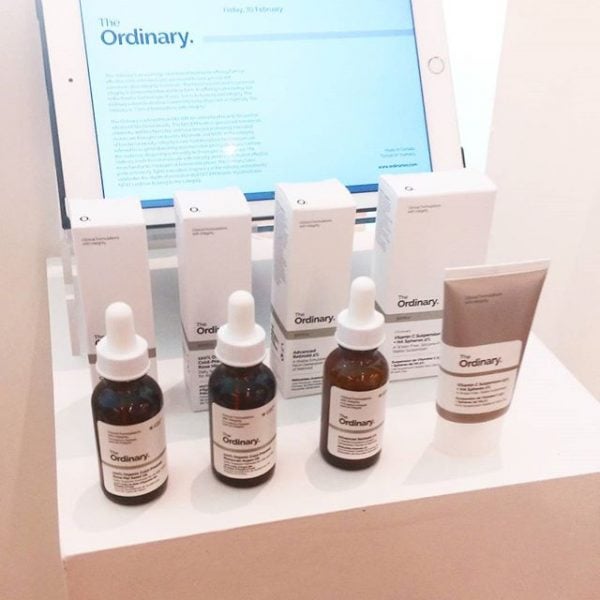
With a more expensive brand, where there’s a lot more thought and effort put into their formulations (and the price actually reflects that, rather than just marketing – this definitely isn’t the case with all expensive brands), you can generally pick up any product, and there’s a good chance it’ll work for your without unnecessary irritation.
But with The Ordinary, you have to put in a lot more effort to work out what will and won’t work for you. A lot of people who have more tolerant and forgiving skin will actually enjoy that journey and experimentation, but if you just want to pick low-fuss products with minimal effort, and if you want to lower the risk of a bad reaction, then The Ordinary probably isn’t for you.
This approach also means that if an Ordinary product didn’t work for you, you shouldn’t write off that ingredient. A better formulated product might still work for your skin. To an extent, it’s a cheap way to try out lots of different active ingredients… but some of the time you aren’t giving that ingredient a fair chance.
One final warning: the low price of The Ordinary’s products makes them really accessible, but it also means it’s tempting to buy a whole bunch of products and slap them all on at once. It’s like being a kid in a candy store! This is a really efficient shortcut to burning the crap out of your skin, and it can take ages to recover.
The single-ingredient model also tends to encourage people to do too much to their skin. When products are assessed for irritation before they’re released, and when ingredients have recommended percentages for formulators to use, it’s assumed that you’ll be using 1 or 2 products only, not 5 at once.
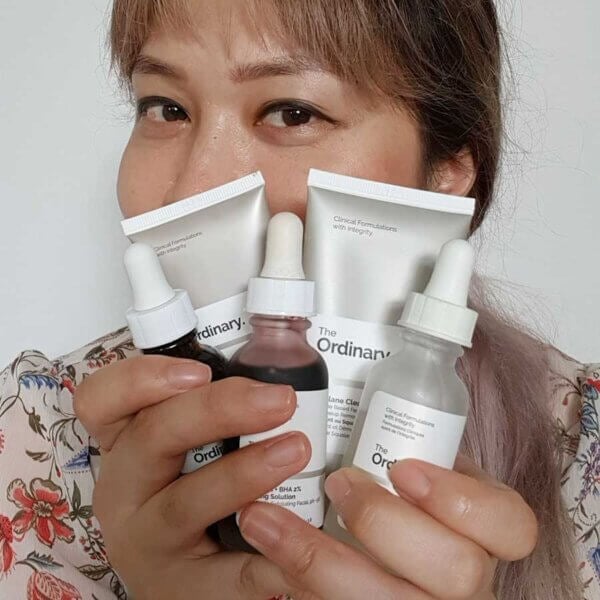
The Ordinary’s regimen guide is actually pretty sensible – they don’t really recommend more than 2 or 3 active products in a routine, but I see a lot of people do it anyway. I think The Ordinary could make it clearer that you shouldn’t use that many products at once, because it’s really obvious that people are ignoring their guidelines. But I guess people are going to do what they’re going to do, and it’s hard to expect a company to check what’s in your cart and go “Are you sure you want to buy all these?”
So if you’re getting into The Ordinary, try not to get overexcited. Introduce one new product every 2 weeks, so you don’t overwhelm and irritate your skin, and you can properly assess whether or not a particular product is actually doing anything for you.
Onto the products…
Acid Exfoliants
Best: Lactic Acid 5%/10% + HA
Simple formulas tend to work quite well for acid exfoliants, so these tend to be some of The Ordinary’s most popular products. Two of the best in my opinion are the Lactic Acid 5% + HA and Lactic Acid 10% + HA.
Lactic acid is my favourite alpha hydroxy acid exfoliant. As a reminder, alpha hydroxy acid exfoliants (AHAs) help dead skin cells unstick more easily, and that means they can help with skin texture, pigmentation and clogged pores. But they do also make your skin more sensitive to burning with UV, so you need to make sure you’re already using a sunscreen in your routine before you start using these.
Related: The Essential Guide to Exfoliation
Lactic acid is generally less irritating than glycolic acid, although it does depend on the formulation. This one is really gentle, and it can be hard to find affordable lactic acid products – when it was initially launched I don’t think there were any budget-friendly lactic acid products on the market.
I think the 5% Lactic Acid is a really good starter exfoliant, or if your skin is sensitive and easily irritated by acids. If you like what the 5% is doing for your skin, and you want to go stronger, then switch to the 10% version. I really like that both of these are in the range, so there’s an obvious progression.
Best: 7% Glycolic Acid Toning Solution
The Glycolic Acid 7% Toning Solution has been one of my favourite Ordinary products ever since I first started using it. It’s a really simple, no-frills glycolic acid exfoliant.
It also works well as an acid deodorant, if you want to go down that route, and it’s so inexpensive and comes in such a large bottle that it’s great for putting on any ingrowns you have on your body too.
Related post: Chemical Exfoliants as Deodorant? The Science of Smelly Armpits
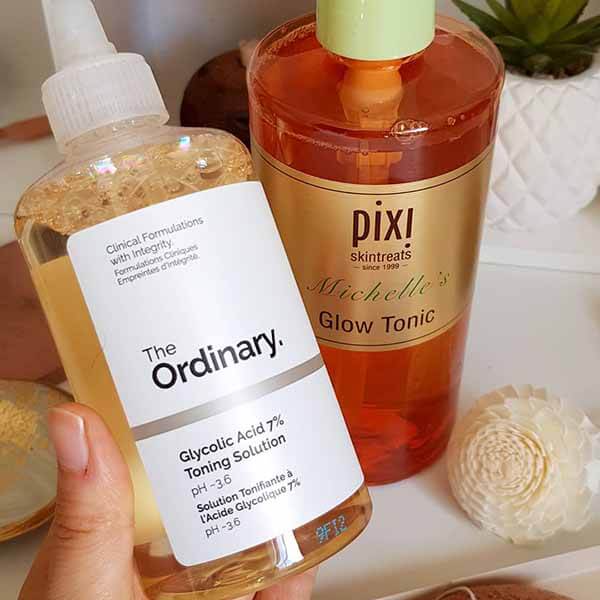
The main issue I have with it is that it does kind of encourage overuse – “toning solution” makes it sound like it’s a really non-irritating product that most people can use daily (I don’t think this is true for most people). It’s also 7%, but on my skin it feels stronger than 7%, and comparable to other 10% or 15% glycolic acid products I’ve tried.
So don’t treat this product as a toner, treat it as a chemical exfoliant – if your skin is easily irritated, if you’re already using irritating products in your routine, then proceed really carefully.
But if your skin likes chemical exfoliation, and you use it sensibly, and step up your exfoliation really carefully – I have a free exfoliation guide that goes through how to add exfoliants into your routine – then it’s a great product.
I also don’t think there’s any need for a cotton pad for exfoliants. I apply them all with my fingers, because I don’t like to waste product. Cotton pads also tend to be rougher than your fingers, so it adds some physically exfoliation to your routine, and a lot of the time you don’t really need that.
Worst: AHA 30% + BHA 2% Peeling Solution
The famous AHA 30% + BHA 2% Peeling Solution! This is the red one you’ve probably seen around everywhere.
I’m putting this in the worst category because I know this works for a lot of people, but I think it’s also abused by a lot of people. This is like the St Ives Apricot Scrub of the late 2010s. While there’s nothing inherently wrong with the product itself when used safely, the hype around it means it just isn’t used safely much of the time.
This is a really high concentration wash-off chemical exfoliant. It’s the sort of thing that can give you a chemical burn if you’re not careful. It isn’t something that I think people should use unless they’re experienced with acid exfoliants – perhaps they’ve been using chemical exfoliants for a few years, and have had professional peels before so they know how it’s meant to feel, and maybe have overexfoliated a few times with weaker products, so they know what can go wrong.
I’ve seen people dermarolling over this, people using it every day, people leaving it on for too long…
The Ordinary do have lots of warnings about it. They say things like experienced users only, only use twice a week at most (even though I still think that’s too much for the vast majority of people). Even though a lot of people are using it sensibly, the easy availability does mean that a lot of people also aren’t. Perhaps it would be better to have more regulations around it – for example, if it was an over the counter drug, you would at least have to talk to a pharmacist before you can buy it.
In Australia it’s actually illegal to sell products with over 20% glycolic acid at low pH outside of salon use. I used to think that policy was unnecessarily overprotective. But now that I’ve seen how people use this peel, and I’ve talked to dermatologists and estheticians who’ve had patients come in with really bad irritation, chemical burns and destroyed barriers from using this product, I’m starting to think that that policy actually does make a lot of sense.
Retinoids
Worst: Retinol in Squalane
Retinoids are the gold standard ingredients in skincare. They’re good for a whole bunch of issues like fine lines, acne and pigmentation. There are drug-only retinoids that are more powerful and usually more irritating, and there are retinoids that are allowed in cosmetic products, that tend to be weaker.
Retinol is the most common vitamin A ingredient you’ll find in cosmetic products, and it is really unstable. It needs the extra bells and whistles to make it from the manufacturer to your house, then once you open it and start using it, it’ll need extra protection against degradation. It also needs to make it reasonably deep into your skin to actually work.
And with The Ordinary’s Retinol 0.5% In Squalane (and their other retinol products), you have the worst of all worlds here. You do have light protection from the brown glass bottle, but the dropper bottle means there’s air going in. The simple formula means there isn’t much in it helping keep the retinol stable after opening, and the lack of testing and optimisation means they didn’t tweak the formula much to make it last longer or get into your skin.
There’s actually a recent study that looked at how much retinoids degraded in products, and it was really variable. This is something that some of the larger companies who conduct their own research and development pour a lot of money into. For example, Neutrogena’s formula is optimised and stabilised so much that it comes in a jar, and its shelf life is an impressive 24 months.
Related post: Choosing retinol products: Neutrogena Rapid Wrinkle Repair Regenerating Cream
The Ordinary’s one, with minimal optimisation, is not so good. In the study (which tried to replicate real-world conditions), there was only about 30% left after 6 months. The degradation also follows first-order kinetics, which means the degradation happens fastest at the start.
PK also said in our interview that he recommends keeping it in the fridge after opening, and that the shelf life after opening is 3 months, so I just don’t think it’s worth it.
If you want a retinol product, get something from a brand that’s conducted stability testing on the amount of retinol that’s left after a decent amount of time, and who are happy to stand by the claim. Basically, look at the product info to see if there’s any mention of stability. If there isn’t, ask the company if they can guarantee the stability. If you’re in a country like Australia where prescription tretinoin is relatively easy to come by, I’d recommend that – pharmaceuticals have guaranteed stability over their shelf life (on the flip side tretinoin can be more irritating).
Related post: My Routine for Starting on Tretinoin (Retin-A) Cream (with video)
Best: Granactive Retinoid 2% Emulsion
In that same retinoid stability study, The Ordinary’s Granactive Retinoid 2% Emulsion was really stable, with less than 15% degrading after 6 months.
This isn’t really surprising since Granactive Retinoid’s active ingredient (hydroxypinacolone retinoate) was specifically designed to be stable. Studies have also found that it’s meant to be more effective with less irritation, but since it’s an ingredient sold by one ingredient company, there’s potential for bias since no one else has published any research on it alone. Anecdotally, most people say this isn’t irritating at all.
There are a few different Granactive Retinoid products from The Ordinary have – there’s the 2% emulsion, and a few versions in squalane (although these seem to be getting harder to find). I’d recommend the emulsion, since emulsions generally deliver these sorts of active ingredients into skin more effectively. But as far as I know, The Ordinary haven’t done many efficacy studies on their formulations, so it’s a bit of a best guess.
Vitamin C
Worst: 100% L-Ascorbic Acid Powder
I’ve talked about the powders before. I think they’re really just lazy products and unnecessary, and if you look at the prices they are kind of a rip-off.
Related post: Why I don’t recommend The Ordinary’s Niacinamide and L-Ascorbic Acid powders
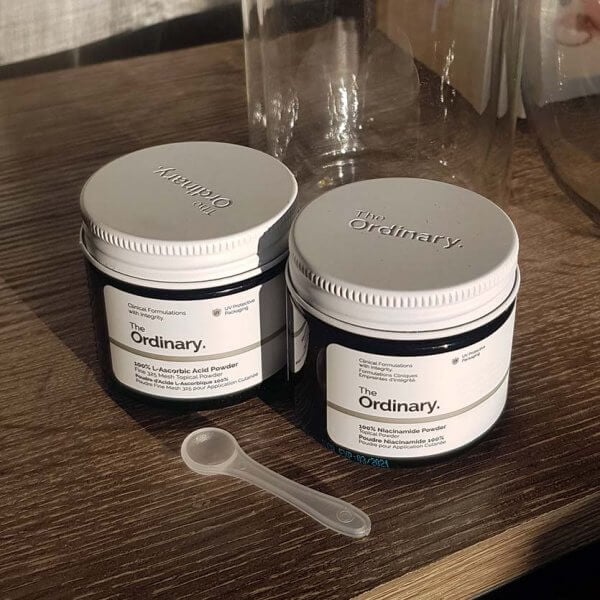
First off, 100% L-Ascorbic Acid Powder. Vitamin C is a really fantastic antioxidant that protects your skin against free radicals, like the ones produced through UV exposure. It’s also been recorded to have effects on fading hyperpigmentation and increasing collagen – it’s actually regulated in Japan as a quasi-drug.
The issue is that its effectiveness is really formulation-dependent. The best tested form of vitamin C, ascorbic acid, is massively unstable in water-based products.
Ascorbic acid is already a pretty irritating ingredient, and a lot of people find properly formulated ascorbic acid serums too irritating – this powder is an even more extreme version. This might work for you if you already like ascorbic acid and your skin is made of steel, or if you want a product that you can put on your body without worrying about the price (body skin is less easily irritated and you have more leeway with measurements because you’re applying more product).
But if you buy pure ascorbic acid from a supplement store, it works out a lot cheaper than this powder (about 80 cents for the same amount you get in The Ordinary’s $6 jar). So I feel like there isn’t really much point to this product, unless you really like the jar packaging, or you don’t know if you’ll keep using it, or you’re trying to take advantage of discounted shipping.
Ehhhh: Vitamin C Suspensions
The Ordinary’s Vitamin C Suspension 23% + HA Spheres 2% and Vitamin C Suspension 30% In Silicone are safer products that have the same benefits as the powder in terms of stability. It’s a lot easier to dispense a safe amount of a 23% or 30% product than pure powder, and they’re also water-free so they’re very stable.
But the instructions are not great, and I think that’s why we’re seeing a lot of people also getting chemical burns with this. I actually really like this type of product, but you really need to use a tiny amount and mix it with something water-based so the ascorbic acid can dissolve and spread out properly. But the instructions just say to apply straight to your face, and that’s where it can really go wrong.
So I’ve invented a third category called the “Ehhhh” category, where I’ll put products that will work really well for some people – the ascorbic acid suspensions go here.
Best: Ascorbyl Tetraisopalmitate in Vitamin F
Honestly, there isn’t really a standout vitamin C product from The Ordinary that I love and feel comfortable recommending in general. I personally like the ascorbic acid suspensions, but you have to ignore the instructions, which makes them so error-prone.
Ascorbic acid derivatives can be a good option in terms of stability and lower irritation, but I think they really need to be backed up by clinical studies to show that they can actually be delivered into skin by the formula, which is not The Ordinary’s wheelhouse.
But if I had to pick a best vitamin C product from The Ordinary, it would be the Ascorbyl Tetraisopalmitate Solution 20% In Vitamin F. It’s more stable than ascorbic acid, and I liked it when I used it. But it didn’t have the same “wow” effects on my skin as a good ascorbic acid product. So this would be my pick if you want something from The Ordinary or if you can’t handle ascorbic acid, but if you want a proper vitamin C product I’d go with a different brand.
Niacinamide (Vitamin B3)
Worst: 100% Niacinamide Powder
Niacinamide or vitamin B3 is a really popular skincare ingredient because it’s really versatile – very few people are sensitive to it, it isn’t irritating, it actually helps with irritation and restoring your barrier, it helps with a bunch of conditions (acne, pigment, texture), it’s a good addition to sunscreen.
Related post: What Is Niacinamide and What Does It Do in Skincare?
But niacinamide is an ingredient where I think the formulation can make a big difference. My skin wasn’t a huge fan of The Ordinary’s Niacinamide 10% + Zinc, but it responded well to Paula’s Choice 10% Niacinamide Booster.
So with something like the 100% Niacinamide Powder, it’s really throwing the dice. And I don’t think you need to go higher than 10% or 15%. There aren’t any studies showing benefits with high percentages, and there are a lot of dermatologists and estheticians seeing people reacting to high concentrations of niacinamide. Niacinamide is also in so many products these days, and it’s not unstable like vitamin C, so I just don’t see the need for this product to exist (but I can see why they released it, since their niacinamide serum sold so well).
Ehhhh: Niacinamide 10% + Zinc
Niacinamide 10% + Zinc is The Ordinary’s best selling product, so clearly it works for a lot of people. But on some people it causes really nasty cystic pimples, and then on some people like me it was just unimpressive. (I actually liked it when I tried it, but I wasn’t really convinced it was doing too much, then I tried Paula’s Choice 10% Niacinamide Booster and that was actually really effective on my skin.)
I think the breakouts this causes for some people makes them think they’re sensitive to niacinamide. But from what I can tell, it’s probably not the niacinamide, but something else in the product. So I think this formulation is probably giving niacinamide a bad name, which is a pity because everyone seems to be bunging niacinamide in everything, so you might be unnecessarily restricting your product choices.
So if you do react to this product, or you’re not impressed with it, don’t necessarily give up on niacinamide (although I totally understand if you don’t want to take that risk again).
Cleansers, Moisturisers, Sunscreen
Best: Plant Oils
The Ordinary has a lot of plant oils, and plant oils are generally expensive and go off really fast, so having inexpensive versions is awesome.
Now, no one needs to use oils. Oils are mostly emollients, which smooth out your skin. If you use a lot they can also be occlusive, and seal in water. But if you use a balanced moisturiser that has all three moisturiser types – occlusive, emollient and humectant (grabs onto water and keeps it hydrated) – you’re probably going to get better results than with an oil, which is a lot more one-note. But if your skin is dry adding extra oil can help, and if you like the feel of an oil, then oils are also great.
You don’t necessarily need to avoid oil if your skin is oily! They can help soften flaky skin, and they work well as a final layer on top of everything else in winter, which is how I like using them.
I do wish that they had the production dates of their oils on the packaging, so you had a better idea of when they go off, but it’s hard to complain when they’re so affordable.
My recommendations are the 100% Organic Cold Pressed Rose Hip Seed Oil and 100% Cold Pressed Virgin Marula Oil, but different people like different oils, and some oils break people out. Rose Hip Seed Oil works amazingly on my oily skin and gives my skin a nice smooth glow, but I’ve heard a lot of people say it breaks them out.
Best: 100% Plant-Derived Squalane
100% Plant-Derived Squalane is fantastic If you want a really no-frills oil (well, oil-like substance that isn’t technically an oil) that doesn’t go off easily.
Squalane is a hydrogenated version of squalene, which has a double bond. Double bonds are reactive, and they’re why plant oils tend to go off so easily. The hydrogenation gets rid of the double bond, which gives squalane a much longer shelf life. So if you’re like me and you only use tiny amounts of oil, squalane is great. Mineral oil works well for this too, but I feel like mineral oil doesn’t really sink into my skin.
Again, it’s not a complete moisturiser and only just has emollient effects. If you feel like it’s not softening your skin enough, or if your skin is still drying out, get a proper, balanced, complete moisturiser with occlusives and humectants as well.
The downside of squalane is you don’t get the extra antioxidants like with a plant oil, but that’s the tradeoff for the longer shelf life.
Best: Squalane Cleanser
I was really pleasantly surprised by The Ordinary’s Squalane Cleanser. It’s one of their few properly formulated products that isn’t just an active ingredient dispersed in a base, and it’s actually formulated really well.
It’s basically a cleansing balm in a tube. It’s pretty good at melting off my sunscreen and makeup as a first cleanse (although not as well as some oilier cleansing balms I’ve used), and it spreads nicely on your skin and washes off reasonably well.
Related post: How Do Cleansing Balms Work? The Science
If you’re not familiar with this sort of product, you massage it on dry skin, then rinse it off with water. I wash it off in the shower with warm water.
I use this as the first cleanse and follow up with another foaming cleanser. I don’t think I’d be able to use this on its own effectively if I had a lot of makeup on. I think if you use a washcloth it might work with waterproof sunscreen and makeup on its own.
I do think it would be good if The Ordinary had a regular one-step cleanser – it’s a bit confusing to have this as the only cleanser in their lineup.
Worst: Mineral UV Filters SPF 30 With Antioxidants
I grabbed a tube of Mineral UV Filters SPF 30 With Antioxidants when I was in the UK. It’s not approved as a sunscreen in Australia, although they’ve said that they are working on newer sunscreens that will be launched here. I’m hoping they’ll be better because this has an intense white cast, and it’s thick and pore-clogging. I think sunscreen is one of those products that doesn’t work well with The Ordinary’s approach – sunscreens are difficult to formulate and you have to go through a lot of rounds of optimisation if you want a pleasant formula, and The Ordinary don’t do much optimisation.
Ehhhh: Natural Moisturizing Factors + HA
Natural Moisturizing Factors + HA is another ehhhh product for me. This is a really good moisturiser if you have oily skin, and if you already have a lot of other moisturising ingredients in your routine, from other serums – it’s lightweight and doesn’t add greasiness to your skin.
But a lot of serums from The Ordinary don’t have many moisturising ingredients because of the simple formulations, and this product is just not a very complete moisturiser.
I think that’s because The Ordinary do sell other moisturising ingredients on their own, like Hyaluronic Acid 2% + B5 and plant oils, and they expect you to use them together – which makes sense, but this range is really missing a proper well-rounded moisturiser for people who need more.
If you have dry skin, this is not going to do it for you, and if you only use other Ordinary products in your routine this probably won’t do much either. But for my oily skin, this partners really well with other ingredients in my highly disloyal routine with tons of different brands. But there are so many other really effective moisturizers on the market that I think you can just skip this.
Azelaic Acid
Ehhh: Azelaic Acid Suspension 10%
Azelaic acid is an ingredient that I don’t tend to use a lot in my routine. There a few studies on it for acne, rosacea and hyperpigmentation, but from talking to some veteran dermatologists, they tend to call it “an active ingredient in search of a disease” – basically, some companies really wanted to make azelaic acid happen, and so they tested it against everything until it stuck.
The studies used high concentrations – 20% twice a day – to have effects, so it’s not really the most powerful ingredient. It also means you end up with a lot of limitations in your routine – it has to work well with the rest of our products because you have to use it so frequently, plus the formulations are difficult because they contain 10-20% sticky powder. But it is pretty non-irritating, and it’s safe in pregnancy, and some people have a lot of success with it.
The Ordinary’s Azelaic Acid Suspension 10% is pretty hit-and-miss – it’s a pretty sticky formula that tends to pill up if you apply too much, but if you don’t use enough you don’t really get the benefits since azelaic acid is so weak.
I prefer the Paula’s Choice version, but this one is more budget-friendly. There’s also the proper drug azelaic acid products, which I think are always best if you can get them, and if they work for you, because of the extra guarantees you get in terms of quality and effectiveness. So this product does have some great reviews, but I think there are better azelaic acid products out there.
Those are my opinions on these products from The Ordinary! Do you agree? Is there an underrated product I missed? Do you want me to do the rest of The Ordinary’s products, or do you want to see another overview first, like The Inkey List? Let me know in the comments!
These products were provided for editorial consideration, which did not affect my opinion. This post also contains affiliate links – if you decide to click through and support Lab Muffin financially (at no extra cost to you), thank you! For more information, see Disclosure Policy.


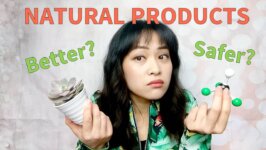
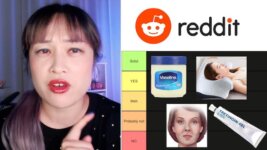
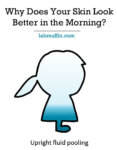

I just placed an order three days ago, and half the products in it are on your “worst” list. Oh, well, what’s done is done, and I’ll make better choices next time. 🙂
I would love to know your opinion on The Ordinary’s Resveratrol 3% + Ferulic Acid 3% and your opinion on those ingredients in general. When I started using The Ordinary’s Granactive Retinoid it irritated my skin. Then, by chance, I started using the Resveratrol 3% + Ferulic Acid 3% with it and the irritation went away. I was curious, so I scored the Internet and found one dermatologist who suggested adding ferulic acid to retinol products to minimise irritation but he didn’t explain why it worked. Indeed, when I ran out of the Ferulic Acid and couldn’t get hold of it for quite a long time, some irritation returned. If you have any ideas on these or sloths be great to hear them. Thanks for your time 🙏
OMG! I love you for doing all of this!! I’m so excited to watch this video 20 times! Lol
This pandemic has been so hard for me, but your videos are getting me through it. I was never into skincare before covid. You’re like my new best friend, since I haven’t seen my real ones in almost a year.
You’re fabulous! Thank you!
I disagree with the natural moisturizing factors and ha review. I have dry skin and I love this moisturizer! Granted I use it with copper peptides and rosehip oil on top. I do prefer a lighter feel moisturizer however. A lot of moisturizers are so thick I feel like my skin can’t breathe. Thank you for your insight into all these products. Good to hear from an expert.
Thank you for this. Super helpful! I know vitamin c is good for the skin but with all the issues re: stability and volatility it’s hard to know which one is most effective (and worth the $$ for the pricey ones). Do you have any recommendations from your POV?
Thanks!
I think the cheapest and most effective is my DIY one – but if you’re too lazy for that then maybe very carefully using the waterless vitamin C ones might work!
Please do the Inkey List. There’s a lot of talk of comparisons between The Ordinary and Inkey list with some conclusions that The Inkey List do better formulations.(?)
Great review, will help me a lot for next shopping for The Ordinary!
For how long is the skin sensitive to light after you use a Retinol product?
Interestingly there’s evidence that retinoids don’t increase photosensitivity! But given that UV undoes a lot of stuff that retinoids do, it’s still a good idea to wear sunscreen…
the ordinary peptides please! and yes the inkey list!
The point about azelaic acid as an ingredient is interesting. I see it more and more, over social media and derms/other pros breaking this ingredient down in their posts. I can only suspect companies will start developing with it more frequently.
Would be curious to see a full post about it from you if you ever start using it more frequently.
Thanks Michelle, great review and very helpful. Would love a similar review of The Inkey List as I use some of their products as well and would find it interesting.
Cheers!
I’m a library programmer doing a skincare series, & I love reading your website for the nitty gritty scientific details. I also work at Sephora, & I would love to see your opinions on the Inkey List. I have never tried any of their products, but the price point always makes me suspicious. I’d love to be able to recommend a budget friendly line for clients dipping their toes into active ingredients, but I also don’t want to lead them astray.
What about the included amino acids like arginine and histidine in the Natural Moisturizing Factors + HA? Aren’t they good addition to the cream?
What exactly is Natural moisturizing factor (NMF)? If NMF components are of key importance in the healthy skin maintenance why don’t most moisturizers just replicate (as much as possible) its composition?
I bought Retinol in squalane 0,2% and was a little bit upset to find out that it was on the worst list. However, as far as I understand, the biggest concern is that it breaks down quickly after opening, which is fine with me, as I am planning to get pregnant in the summer and wanted to experiment with retinol until then, so anyway I have only 3 months for retinol, which is the shelf life of this product after opening! However, I did not want to spend a lot of money on experimenting, either, as I’m pretty new at this retinol game and I have super sensitive skin – most of my new products then get passed to my mom. So, I purchased several products with were some of the cheapest available in my country, and The Ordinary was one of them. I am really glad that they offer such affordable products that are easily available all over the world! You can experiment and try out different ingredients and see what they do to your skin, and if you then want to upgrade, you can search for more expensive options with more elegant and stable formulas
This is amazing thank you!! Could you review the Facetheory products next?
I was wondering if I might be able to make my own ‘vit C suspension’, and then use it as you suggested doing with TO’s, by mixing it with another product. I was thinking mixing some ascorbic acid powder with jojoba oil, to make a paste of sorts, and then take tiny amounts of that and mix it with a moisturizer with my fingers right before applying.
I bought some powder to make your vitC serum, but unfortunately found it tedious to remake every week, plus I really feel like the store-bought serum is giving me better results re PIH marks fading. My feeling was that the DIY serum wasn’t really soaking into the skin, so was hoping that in the ‘suspension’ the powder could piggyback off of the moisturizer in ‘getting in’.
I’m aware of the lack of precision in the % of ascorbic acid in that sort of preparation, and of course I’d watch for irritation, and would start by erring on the lower side, but I’m willing to risk it and eventually find some sweet spot. What I don’t have any knowledge in is whether this has the potential to mess up the effectiveness of the moisturizer, e.g. change the pH in some undesirable way. I know you have no way of knowing what’s in my moisturizer, but I’m guessing you wouldn’t give that suggestion in the post if it wasn’t doable. All I know is that vitC doesn’t play nice with niacinamide, but maybe there are other ingredient conflicts to consider?
If you’re mixing it right before applying, even niacinamide isn’t really an issue! The only ingredients to avoid I can think of are benzoyl peroxide, peptides and maybe retinol in the moisturiser. The pH will probably be a bit low and could be irritating, but if your skin can handle it then it’s probably fine.
Instead of jojoba oil, another option might be a waterless silicone-based primer, which is pretty similar to the base used in waterless ascorbic acid products.
For the “soaking into skin” (probably not for you but for anyone else reading this who doesn’t find it tedious to remake frequently) it could be dealt with by applying moisturiser 15 min afterwards.
Thanks a bunch for replying. I feel encouraged and safer in experimenting and am off to make my ‘suspension’ as we speak. It would be so cool if it would work for my skin and I wouldn’t have to spend on vitC serums any more (knowing me, the money’s just gonna go towards another serum:)).
The tediousness is a reflection on me though, not the serum; it couldn’t be easier to make but I could almost swear a week passes more quickly when I’m making it:). Btw, even when I’d wait a bit before moisturizing, I’d feel more like it’s evaporating/drying out, rather than sinking in, which also kinda makes sense, as pure water placed on skin doesn’t really ‘go inside’. And I’ve been conditioned to reach for my moisturizer while my face is still damp, to ‘lock moisture in’ and to take advantage of greater skin permeability after cleansing(all those notions I learned from you:)), so waiting tight-faced for 15mins would feel a bit.. wrong?
I just thought I’d report back from my little experiment. It was a bit of a womp-womp situation. For starters, my ‘suspension’ was more of a ‘sink-to-the-bottom-ension’, which I suspect you anticipated when you suggested using a primer (which I don’t use). I suppose I could make it thicker, but then I’d be defeating the whole purpose and might as well be using the ill-advised powder by itself. It wouldn’t quite dissolve in my moisturizer in my fingers, and I had to use much more finger-surface area to try and mix it up, which means wasting more product, and the rubbing still felt exfolianting-y on my face, which mostly managed to disappear as I massaged, but even after the moisturizer soaked in/dried there was a bit of a sandy/dusty feeling so I guess not all of it dissolved in the end. I’ll probably give up on this, *but* it did seem to me like it made my skin brighter somehow (though that just might be placebo). One thing I still may try is to whizz the powder in my blender to make it *super* smooth (though it’s pretty smooth as is) and see if that makes a difference. Or else I’ll just use it with my body lotion.
I’d recommend a tiny mortar and pestle rather than a blender – the acid might make the blades rusty!